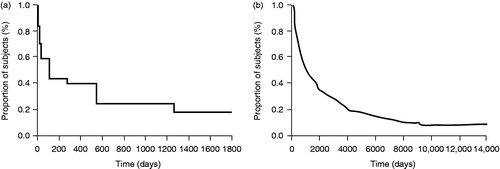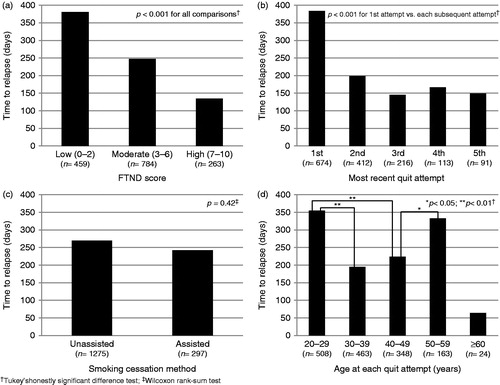Figures & data
Table 1. Socio-demographic and clinical characters of current and former Japanese smokers.
Table 2. Smoking patterns and characteristics, including potential sources of passive smoking exposure, for current and former Japanese smokers.
Figure 1. Proportion of Japanese current and former smokers who had attempted to quit smoking without assistance during the past five quit attempts. For former smokers, the final quit attempt was excluded.

Table 3. Proportion of Japanese subjects (current and former smokers combined) who attempted aided and unaided smoking cessation and their duration of abstinence from smoking.
Figure 2. Kaplan–Meier curves of (a) time to relapse and (b) time to next quit attempt in Japanese subjects (current and former smokers combined).

Table 4. Estimated time to next attempt to quit smoking and the estimated time to next smoking abstinence relapse in current and former Japanese smokers.
Figure 3. The mean time to relapse according to (a) Fagerström Test for Nicotine Dependence (FTND) score, (b) each recent attempt to quit smoking, (c) use of smoking cessation methods, and (d) age at most recent quit attempt in Japanese subjects (current and former smokers combined). Assisted smoking cessation methods included: anti-smoking therapy (varenicline), nicotine replacement therapy (gum/patches), counseling, acupuncture, aromatherapy, Chinese herbal medicine (Kampo) and others; unaided smoking cessation included: ‘cold turkey’ or self-help only.

